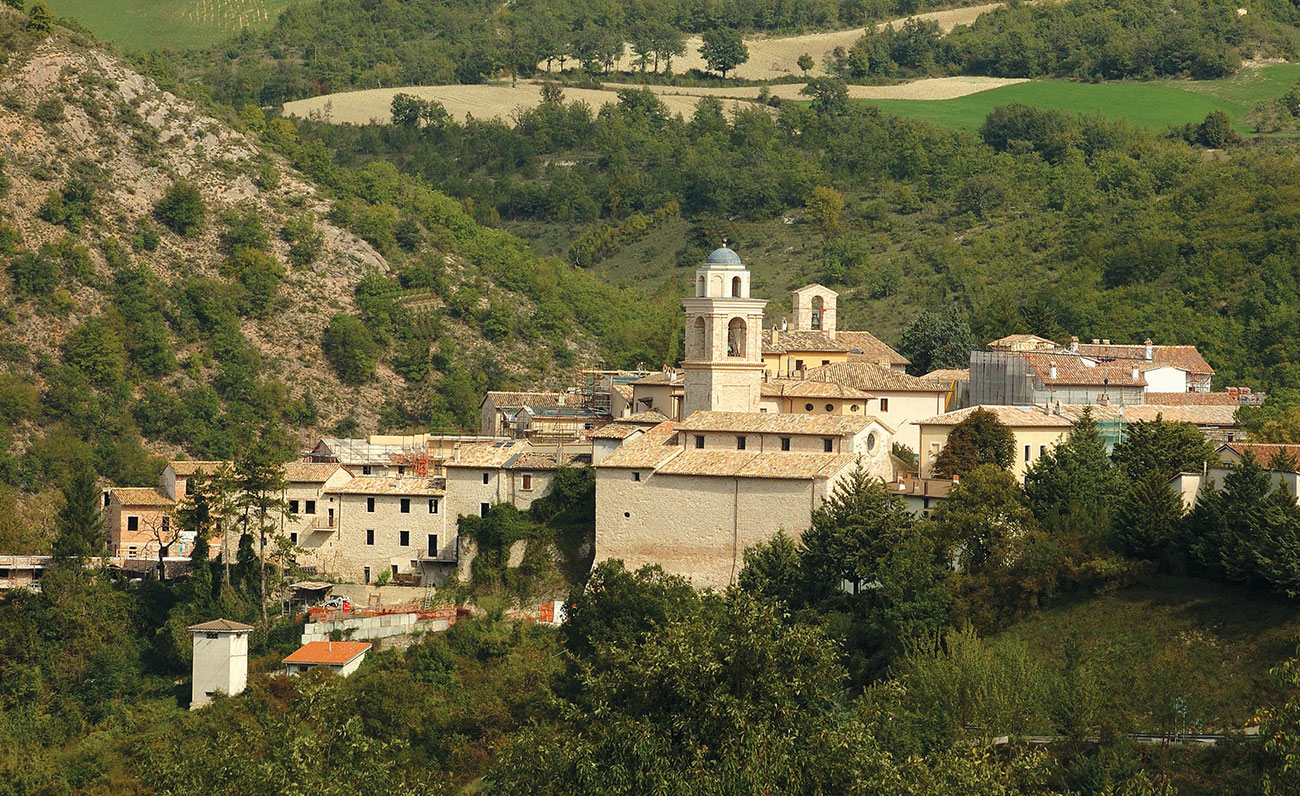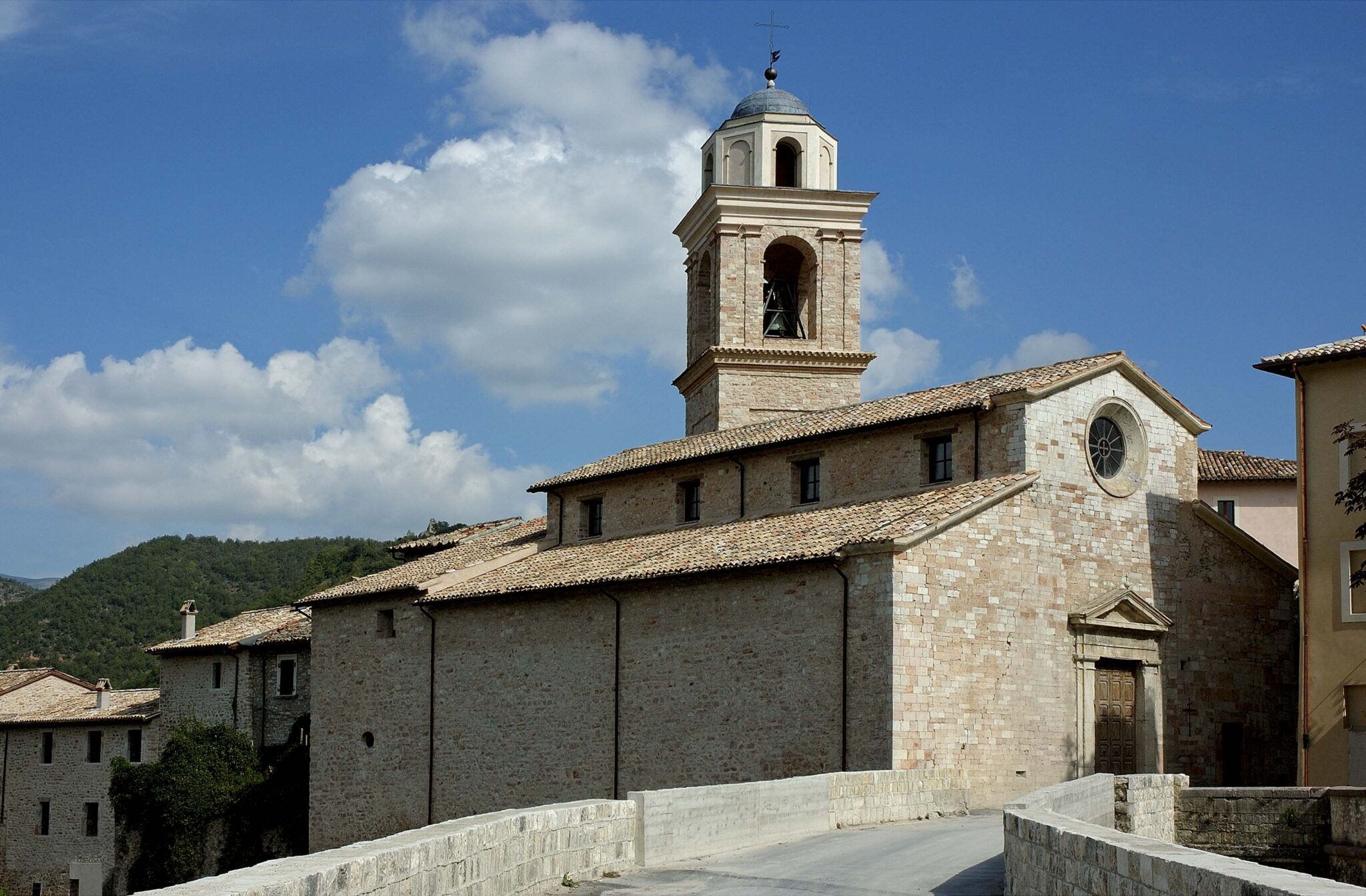Sellano, with its territory, is considered one of the most characteristic landscapes of Valnerina.
The landscape of the Sellano area is marked by the waters of the Vigi river, which extends from the Marche to Borgo Cerreto, constituting the ideal habitat for the tasty Brown Trout. The natural environment takes on aspects of great interest, so much so that the area deserves the name of the Garden of Umbria. The most important environmental component is undoubtedly the particular type of mixed forest that dominates almost all of the Sellano area: Turkey oak with white hornbeam. This shrub (Carpinus betalus) is a fairly rare plant in Umbria but, in Valnerina, it appears in extensive forests. It is characterized by a smooth, white-ash bark, with dark spots, which make it resemble birch.

Sellano and its territory are dotted with two characteristic forms of settlement: villas and castles, two words that in Valnerina take on a particular meaning. The villas were small rural centers that arose in the plain and were responsible for supplying food to the inhabitants of the main center. They always arose along the main roads with a particularly large and open urban fabric. The historical antecedent of the villas, belonging to a Municipality, is to be found in the system of vici and pagi, in which the countryside was organized and managed through small villages, the vici, gathered in rural districts called pagi, larger and dependent on the main urban agglomerations. The castles, always facing onto road lines, instead had a defensive and military purpose: they were in fact engaged in guarding the valleys and roads that were strategically important for trade. These settlements had functions not only of territorial protection, but also of management of the mountain resources exploited in collective forms (agrarian communities). The urban fabric of the castles is always narrow and compact, with an almost always triangular plan, often culminating with the watchtower. In the 16th century the renewed and powerful control of the Church, to the detriment of the Municipalities and the feudal authorities, matured conditions of greater stability that, in many cases, attenuated the need for fortified centers. Therefore, the conversion of many castles into villas occurred, both in terms of new urban identity and in reference to their position. This phenomenon generally affected all the centers of Valnerina, even if at different times and in different ways.

The religious organization of the territory, promoted by the episcopal power and based on the system of parishes and dependent churches, also played a decisive role in the configuration of the landscape of Sellano. Thus, walking along the paths that cross the heart of the territory, one comes across the Church of Santa Maria Novella in Cammoro, an uncommon case of a hanging church that overlaps an ancient covered road, of which two entrances are visible: the first, which is located under the current facade of the church and the second which instead represents the ancient access to the castle of the village. The small village of Pupaggi also hides a jewel of the 13th century: the Church of San Sebastiano, inside which looms the enormous figure of the Eternal Father within a mandorla, surrounded by music-making angels. In Sellano, the Church of Santa Maria deserves special mention, built between the 13th and 16th centuries and featuring an imposing gabled facade flanked by a bell tower. The interior of the Sanctuary has three naves marked by columns surmounted and is embellished with a very rich pictorial set. In this church are preserved the remains of the Blessed Giolo, protector of Sellano, while the cave in which he lived, object of fervent popular veneration is located in Forfi, not far from the temple where his remains rest.
Latest posts by Paolo Aramini (see all)
- Giolo the Hermit, the Saint of Sellano - July 15, 2025
- The Arbor Vitae, when art is an invitation to discover Valnerina - July 8, 2025
- Exploring Montefranco in the footsteps of San Bernardino da Siena - June 12, 2025

